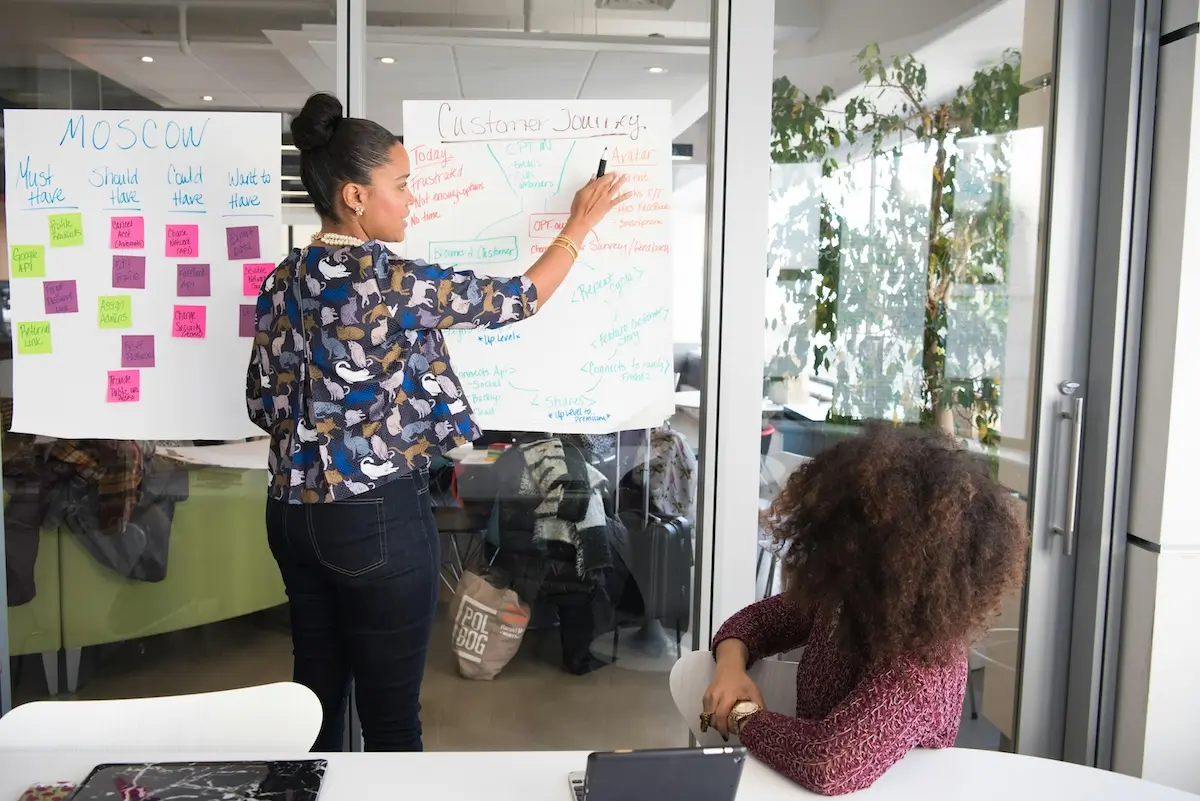AI tools like ChatGPT and Google’s AI Mode don’t just guess when they answer questions. Instead, they learn from what people post, watch, and discuss online. Every LinkedIn update, YouTube video, and Reddit thread feeds the models shaping what billions read next.
When someone asks an AI for advice (which agency to hire, which tool to try), the answers come from the open web. Moreover, they increasingly come from social media.
Data from SE Ranking shows that social and community platforms appear in over a third of Google’s AI generated responses. In fact, blogs dominate, making up 49% of content featured in AI Mode. Reddit and Quora follow. Meanwhile, video content, including YouTube, accounts for only 6%. Similarly, ChatGPT leans even more on Reddit, then LinkedIn and Medium.
This isn’t speculation. Rather, platform documentation, third-party studies, and large-scale usage data from sources like Neil Patel’s NP Digital research ground these findings. The goal is to uncover how AI finds and interprets social content, which platforms matter most, and what that means for brand visibility in the age of AI.
Quick Answers – Jump to Section
- Is AI learning from your social presence?
- Which social platforms are part of AI training and retrieval data?
- Do AI models access posts directly?
- How frequently are AI models updated?
- What part of a post is most likely to be read or indexed?
- Does AI understand visuals in posts?
- Are keywords and hashtags still relevant for AI comprehension?
- Do post formats affect how easily AI tools can read them?
- FAQ
- Final Thoughts
Is AI learning from your social presence?

Yes, but there are some nuances. To understand how social media impacts AI presence, it helps to know a bit about how AI systems are built and learn.
Modern AI systems train on massive amounts of text, video transcripts, images, and other content gathered from across the web. Specifically, LLMs use these sources through a process called machine learning. In this process, the AI identifies patterns in data to predict the most likely next word, phrase, or idea in a given context.
AIs “learn” not by memorizing facts, but by generalizing from examples. Furthermore, many of these examples come from publicly available online spaces.
That means the internet’s conversations, arguments, and explanations all subtly shape how AI “thinks.” Additionally, few places generate more conversation than social media.
However, access matters. For LLMs to read what’s being said on social, they need to access that data. For instance, some networks, like Reddit or YouTube, allow varying levels of access to their content. In contrast, others, such as Instagram or Facebook, largely close off access. Consequently, this availability shapes which platforms AI systems learn from and cite in their answers.
Which platforms dominate AI citations
Recent SE Ranking research shows that 20% of AI Overview responses include at least one social media platform among their top 10 sources. Notably, in AI Mode, that number rises to 36%.
When it comes to which content types dominate in Google’s AI answers, blogs lead at 49%, followed by Reddit and Quora. Meanwhile, video content, including YouTube, accounts for only 6%. Clearly, text-based formats are easier for AI systems to scrape and process than video. Therefore, for brands building authority in competitive spaces, understanding how to boost your brand’s AI references is critical to staying visible.
ChatGPT, on the other hand, relies more on Reddit. Subsequently, LinkedIn and Medium follow as the next most common platforms.
So next time an AI gives an answer, there’s a good chance part of it came from a blog post, Reddit comment, or LinkedIn article.
Which social platforms are part of AI training and retrieval data?
No AI provider has fully transparent public logs of exactly which platforms they use for training or retrieving data. However, we can get a good picture from what’s been made public.
AI training vs AI retrieval

AI training refers to when AI learns from data. That information builds into the model’s memory and shapes how it understands, reasons, and responds.
AI retrieval refers to when the model looks up information in real time from the live web, APIs, or licensed databases to answer a query.
Most platforms restrict AI systems from directly accessing or training on their data. Nevertheless, public content from any platform can still appear in AI outputs if it’s discoverable via search or shared elsewhere. For example:
- Search engines like Bing or Google index public links
- Other sites quote, embed, or summarize the content (such as Reddit, a blog, or a news outlet)
In these cases, AI systems link to or reference the post. Importantly, they don’t train on or directly access the platform’s data.
Access for ChatGPT (OpenAI): Open and licensed.
Reddit has an official data-licensing partnership with OpenAI. As a result, this allows ChatGPT to access Reddit’s real-time data through its Data API.
Access for Google AI: Open and licensed.
Similarly, Reddit also licensed its data to Google for AI training and search indexing in 2024.
Access for ChatGPT (OpenAI) and Google AI: Closed for training, but partially open for indexing.
Meta does not provide Google (or any external AI provider) with training access to Instagram data. However, starting July 2025, Meta began allowing Google and Bing to index public Instagram content from professional accounts.
This means that while AI systems can’t directly train on Instagram data, they may now surface public Instagram posts (if Bing or Google index those posts).
Internal use: Meta trains its own AI systems (including LLaMA and Meta AI) on public Facebook and Instagram posts. However, it does not use private messages or restricted content.
Access for ChatGPT (OpenAI): Closed for training.
Meta does not license its data to OpenAI. Additionally, scraping Facebook is prohibited.
Access for Google AI: Closed for training.
Similarly, Meta does not provide external access to Google either.
Internal use: Meta trains its own AI models using public Facebook posts. Nevertheless, it does not use private messages or restricted content.
X (Twitter)
Access for ChatGPT (OpenAI): Explicitly prohibited.
X’s June 2025 Developer Agreement bans third-party AI systems (including OpenAI and Google) from training on or retrieving tweets.
Access for Google AI: Prohibited.
No public licensing deal exists.
Internal use: X reserves the right to use public posts to train its own AI models.
YouTube
Access for ChatGPT (OpenAI): Restricted, creator opt-in only.
YouTube forbids scraping or data reuse for AI training without permission. Instead, a “third-party AI training” toggle in YouTube Studio allows creators to opt in voluntarily.
Access for Google AI: Internal access only.
Google uses YouTube content internally to improve Gemini and Search. Specifically, this follows its own privacy and creator consent policies.
Access for ChatGPT (OpenAI): Prohibited.
LinkedIn’s terms forbid large-scale scraping or reuse by third-party AI systems, including ChatGPT.
Access for Google AI: Prohibited for training.
No license exists for Gemini training. However, limited indexing for search only is allowed.
Internal use: LinkedIn uses its data internally to train recommendation and AI models within Microsoft’s ecosystem.
Do AI models access posts directly?
It depends on how they obtain the data. Direct access happens only when it’s explicitly allowed. Otherwise, AI models rely on whatever’s publicly visible on the open web.
When companies have a license or internal access, they use the original posts, videos, or images directly. For instance, this applies to Reddit, X (for Grok), and YouTube for opted-in creators.
When access is restricted, AI models only learn about those platforms indirectly. Specifically, they use summaries, quoted text, or articles that mention or describe posts. For example, if a news site embeds a tweet or discusses a TikTok trend, that text might appear in general web data that models can crawl.
Understanding how AI systems protect your brand from hallucinations is equally important when considering indirect data flows.
How frequently are AI models updated?
AI platforms do not publicly disclose the exact re-crawl intervals of their agents. However, signs suggest it happens at least monthly. Moreover, it’s becoming more frequent. Here’s how we know:
- First, Cloudflare’s 2025 crawler telemetry reported a 305% increase in GPTBot activity over one year
- Second, Fastly’s Q2 2025 report noted that AI crawlers often show extended periods of low activity followed by sustained spikes lasting days or even weeks
- Finally, CCBot runs broad two-week crawls each month. Additionally, crawl volumes steadily increase over time.
What part of a post is most likely to be read or indexed?

A realistic hierarchy looks like this:
Main text body and titles → Transcripts (for multimedia) → Alt text and hashtags → Comments and other metadata.
The main text body, titles, and captions carry the most weight. Specifically, both human readers and AI-based indexing systems prioritize them because they contain the actual meaning or “story” of the post.
When a post contains audio or video, the system needs textual equivalents to make the content searchable. Therefore, transcripts or subtitles serve this purpose. For example, YouTube automatically generates transcripts and captions. Consequently, this allows its algorithms (and Google Search) to interpret the spoken words as text data.
Elements like hashtags, alt text, and comments provide supporting metadata. For instance, hashtags help with topical categorization. Similarly, alt text helps accessibility and image search. Additionally, comments may influence engagement ranking. However, systems don’t typically index them for meaning in the same way as the main content.
For brands focused on optimizing content for both search engines and AI, this hierarchy is essential to understand.
Does AI understand visuals in posts?
Yes. As of 2025, multimodal AI models (e.g., OpenAI’s GPT and Google’s Gemini) can interpret image text, memes, screenshots, and visual layouts with high accuracy.
Models parse embedded text through optical character recognition (OCR). They identify objects and relationships between them. They combine visual details with surrounding text to infer meaning.
So, visual context is now an important part of how AI systems analyze and index content (even though cultural nuance and sarcasm still remain challenging for models to interpret consistently).
Are keywords and hashtags still relevant for AI comprehension?
Yes. Modern AI systems like ChatGPT increasingly rely on semantic understanding. Specifically, they interpret meaning, context, and relationships.
This means ChatGPT doesn’t just “see” the words. Instead, it understands what they mean in context. For example, phrases like “buy a home” and “purchase a house” are treated as similar. Their semantic embeddings are close in meaning.
However, this doesn’t make hashtags entirely obsolete. In fact, they may still carry value in certain contexts.
Research in social media natural language understanding (NLU) shows that hashtags can give AI useful hints about a post’s topic. This is especially true when the text is short or a bit messy (like on X/Twitter).
Do post formats affect how easily AI tools can “read” them?
Yes. The format of a post changes how easy it is for AI tools to “read” or to pull out insights.
Text-only posts
With a text-only post, AI can directly parse the text. It already comes in a format AI models expect. Therefore, sentiment, topic, and entity extraction are straightforward.
Image and carousel posts
When posts include images or carousels, AI tools typically must first apply OCR (optical character recognition). This converts visual text into a machine-readable form. However, OCR has limits. Specifically, it struggles with low resolution, stylized or curved fonts, handwriting, uneven lighting, or layered visuals. While modern OCR often performs well in clean, high-quality conditions, in social media posts, the error rate can rise.
Video posts
For videos, there’s another step: automatic speech recognition (ASR) or transcript generation. Unfortunately, ASR systems are not perfect. They can mis-transcribe under poor audio quality, heavy accents, overlapping speech, or ambient noise.
Moreover, a single video may include both spoken words (needing ASR) and embedded text (needing OCR). Therefore, AI tools usually use both methods together. Then, they understand what’s being said and shown before they can analyze the main topics, tone, and emotion.
So in short: text posts are easiest for AI; carousels/images require OCR analysis; and videos rely on ASR reliability.
FAQ
1. Can AI models identify posts from verified, trusted accounts?
There’s no proof that AI systems give priority to posts just because an account is verified. In fact, Google explains that its ranking systems highlight original content that adds unique value. So, having a verified badge or a real name doesn’t automatically make content more likely to appear in AI answers. However, when verified creators post unique and valuable content, their content may naturally rank higher in AI answers.
2. Is X/Twitter still used post-2023 data restrictions?
Yes, but barely. X radically changed access in 2023 and 2025. Specifically, it banned third parties from using X content to train AI models. According to SE Ranking data, X/Twitter appears for just 0.07% to 0.24% of prompts. Clearly, its visibility has dropped to a minimal level.
3. Does Meta content influence AI, or is it hidden behind walls?
It influences AI a little. However, direct visibility is low compared to open platforms. For instance, Instagram shows up for about 1% of keywords. Meanwhile, Facebook appears even less. It shows up for no more than 0.39% of prompts.
4. How long does it take for social content to show up in AI?
There’s usually a delay of a few hours to a few days. Specifically, Bing or Google must first index new content before it can appear in AI responses. For example, when Bing indexed new pages quickly through IndexNow, the pages appeared in ChatGPT within just a few hours.
5. Do Reddit posts count more than comments?
There’s no evidence that AI systems assign higher weight to Reddit posts over comments. In fact, LLMs typically process text in bulk. Therefore, both posts and comments are treated as text snippets during training.
6. Does the freshness of the post or comment matter?
This depends on how the AI uses the data. For training data (what models are initially taught from), freshness is less important. Specifically, training datasets compile from large-scale historical snapshots (often months or even years old). However, for real-time AI responses, freshness does play a role.
Final Thoughts
AI systems don’t just pull answers from thin air. Instead, they learn from what people post, share, and discuss across social platforms. Specifically, blogs, Reddit, and LinkedIn feed the models that shape what billions of people read next.
Understanding how AI accesses, indexes, and interprets social content is no longer optional for brands that want to stay visible. Clearly, AI systems prioritize the formats they can easily parse (text, transcripts, clean visuals).
If your brand wants to show up in AI answers, start by optimizing the content AI systems can actually read. First, post where AI can find it. Then, structure it so AI can understand it. Finally, make sure your social presence works as hard as your website.
_________________________________________________________________
Get your business referenced on ChatGPT with our free 3-Step Marketing Playbook.
Want to know how we can guarantee a mighty boost to your traffic, rank, reputation and authority in you niche?
Tap here to chat to me and I’ll show you how we make it happen.
If you’ve enjoyed reading today’s blog, please share our blog link below.
Do you have a blog on business and marketing that you’d like to share on influxjuice.com/blog? Contact me at rob@influxjuice.com.


Leave a Reply
You must be logged in to post a comment.